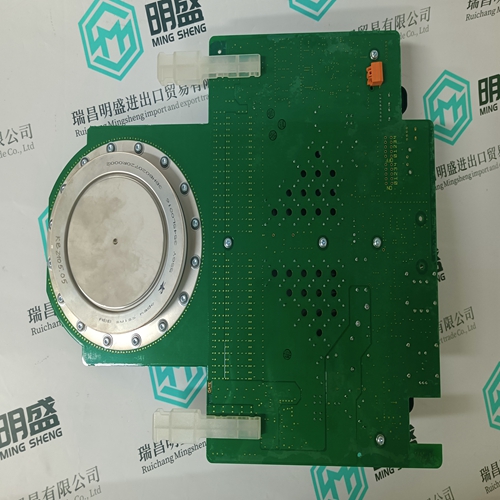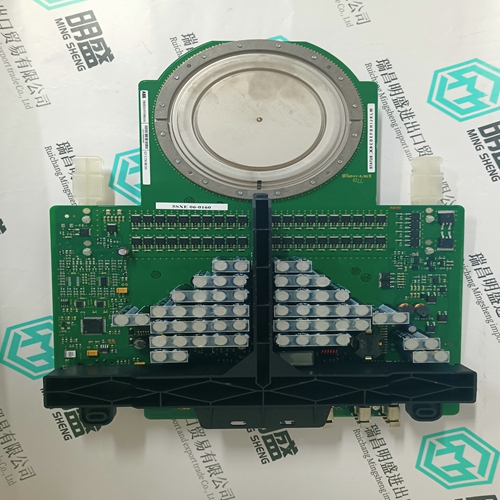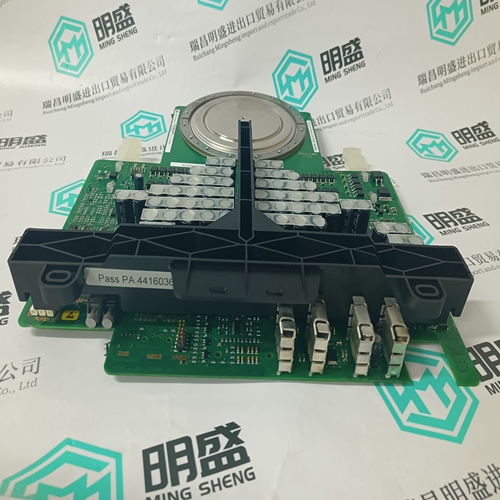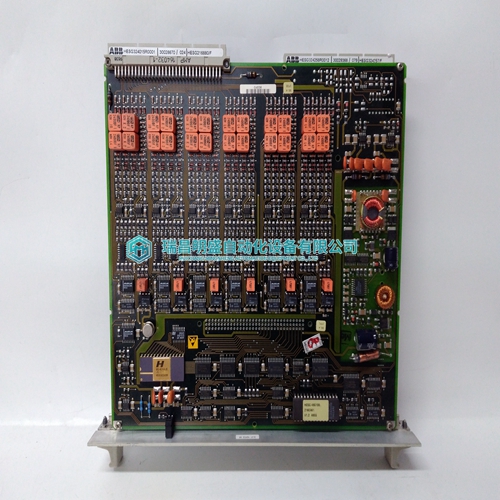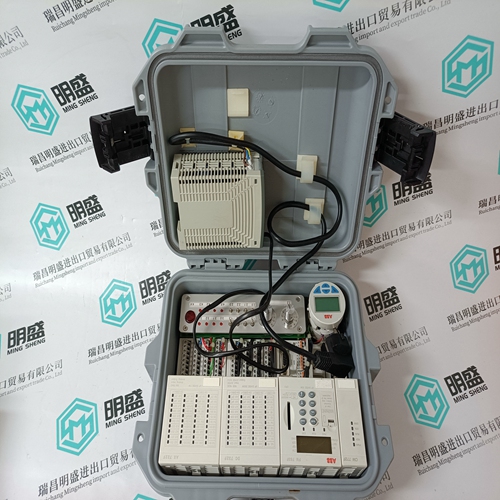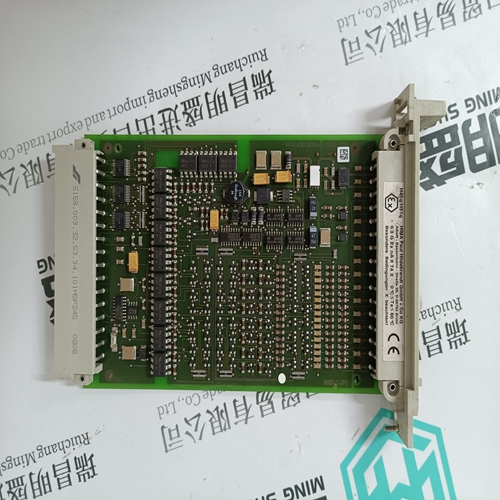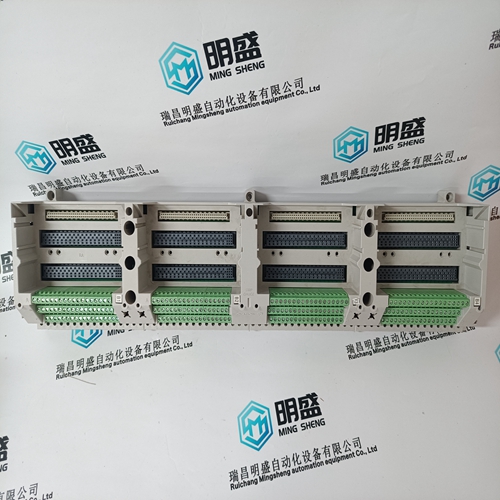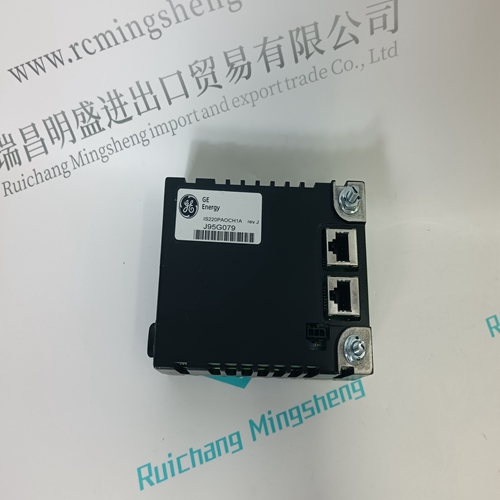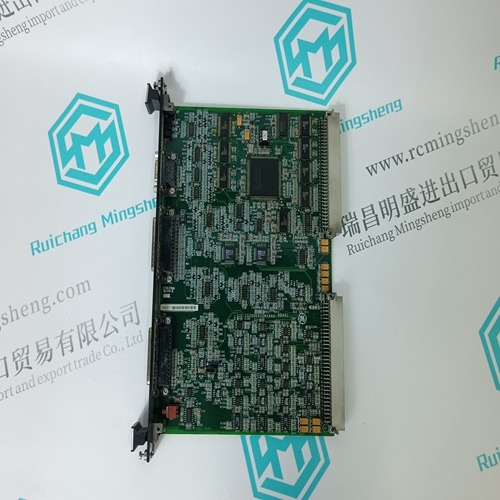Home > Product > DCS control system > GVC736BE101 5SXE06-0160 Thyristor module
GVC736BE101 5SXE06-0160 Thyristor module
- Product ID: GVC736BE101 5SXE06-0160
- Brand: ABB
- Place of origin: The Swiss
- Goods status: new/used
- Delivery date: stock
- The quality assurance period: 365 days
- Phone/WhatsApp/WeChat:+86 15270269218
- Email:stodcdcs@gmail.com
- Tags:GVC736BE101 5SXE06-0160Thyristor module
- Get the latest price:Click to consult
The main products
Spare parts spare parts, the DCS control system of PLC system and the robot system spare parts,
Brand advantage: Allen Bradley, BentlyNevada, ABB, Emerson Ovation, Honeywell DCS, Rockwell ICS Triplex, FOXBORO, Schneider PLC, GE Fanuc, Motorola, HIMA, TRICONEX, Prosoft etc. Various kinds of imported industrial parts
GVC736BE101 5SXE06-0160 Thyristor module
If a SDCS-FEX-2 is used, it will be always recognized as the field exciter Node 1 by the software. If a DCF503A/504A-0050 is used as Node 1 or Node 2 it must be coded according to the table below. Node 2 is operating with a cycle time of 100 ms.Procedure for code changing of the DCF 503A/504A: • Switch off the units voltage supply • Set the appropriate switch according to the table • Initialization through switch on the electronics supply voltage The three-phase field supply converter DCF 501/502 and DCF 601/602 need a separate active Overvoltage Protection unit DCF 505 and DCF 506 for protection the power part against inadmissibly high voltages. The protection unit operates by switch on a freewheeling circuit between the F+ and F- connectors if a overvoltage occurs. The DCF 505/506 consists of a trigger unit and a free-wheeling thyristor (two in antiparallel at DCF 506). Thyristor firing is caused by a 1400 V (FEP1 - 500 V) and 1800 V (FEP2 - 690 V) trigger diode. The DCF 506 consist of a relay output for signalling the field supply converter that the overvoltage protection is active. The output is active in the free-wheeling process until the current is less than appr. 0.5 A.
Line chokes type ND 401...ND 413 Line chokes for use in light industrial/residential environment, high inductive voltage drop, reduced commutation notches. These chokes are designed for drives which usual operate in speed control mode. The maximum average DC load current depends on the operation point. DC curr. 1 = maximum continuous current for Urated supply = 400 V DC curr. 2 = maximum continuous current for Urated supply = 500 V
Directions for Use
1. For high strength structural bonds, paint, oxide films, oils, dust, mold release agents and all other surface contaminants must be completely removed. The amount of surface preparation depends on the required bond strength, environmental aging resistance desired by user. For suggested surface preparations on common substrates, see the section on surface preparation. 2. Mixing For Duo-Pak Cartridges 3M™ Scotch-Weld™ Acrylic Adhesives DP805 and DP820 are supplied in a dual syringe plastic duo-pak cartridge as part of the 3M™ EPX Applicator System. To use, simply insert the duo-pak cartridge into the EPX applicator and start the plunger into the cylinders using light pressure on the trigger. Next, remove the duo-pak cartridge cap and expel a small amount of adhesive to be sure both sides of the duo-pak cartridge are flowing evenly and freely. If automatic mixing of Part A and Part B is desired, attach the EPX mixing nozzle to the duo-pak cartridge and begin dispensing the adhesive. For hand mixing, expel the desired amount of adhesive and mix thoroughly. Mix approximately 15 seconds after uniform colour is obtained. For Bulk Containers Mix thoroughly by weight or volume in the proportions specified on the product label or in the typical uncured properties section. Mix approximately 15 seconds after uniform color is obtained. 3. For maximum bond strength, apply adhesive evenly to both surfaces to be joined. 4. Application to the substrates should be made within 2 minutes for Scotch-Weld acrylic adhesive DP805 or 15 minutes for Scotch-Weld acrylic adhesive DP820. Larger quantities and/or higher temperatures will reduce this working time. 5. Join the adhesive coated surfaces and allow to cure at 16°C (60°F) or above until completely firm. Heat up to 49°C-66°C (120°F-150°F) will speed up curing. Scotch-Weld acrylic adhesive DP805 will fully cure in 8-24 hours @ 23°C (73°F) and Scotch-Weld acrylic adhesive DP820 will fully cure in 24-48 hours @ 23°C (73°F). 6. Keep parts from moving during cure. Contact pressure necessary. Maximum shear strength is obtained with a 3-5 mil bondline. 7. Excess uncured adhesive can be cleaned up with ketone type solvents.* 8. Once Scotch-Weld acrylic adhesive DP805 has been applied to a surface, it is best to join the two mating surfaces together as soon as possible. The reason for this is that after approximately one minute Scotch-Weld acrylic adhesive DP805 may begin to form a very thin “skin” over the exposed surface. If left exposed long enough (2-3 minutes), a thick enough “skin” may form which will inhibit the proper wetting needed to achieve maximum performance. In instances where an extended exposed open time is required, it is still possible to achieve excellent bonds by coating both substrates to be joined and making the bond in such a manner as to rupture the “skin” surface. Scotch-Weld acrylic adhesive DP820 does not exhibit this skinning characteristic
